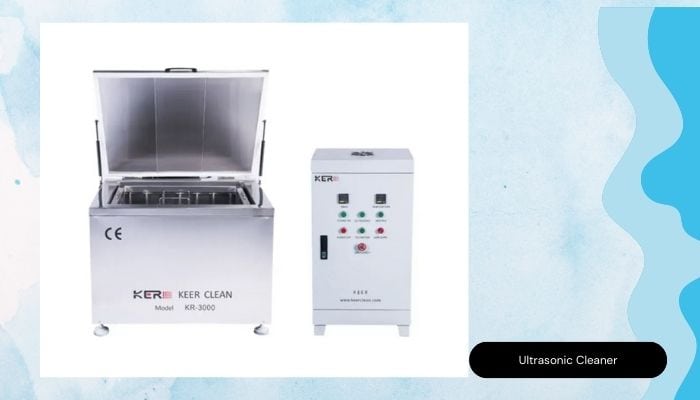With such a vast range of brands, models, and even approaches it can be hard to know what the best industrial ultrasonic cleaner for your business is. Of course, at the end of the day, the “best” item in any category is a very subjective matter that will depend on your needs, budget, and personal preferences. After all the kind of machine that excels at cleaning car parts might not be a good pick to clean jewelry or other fine elements. So how can you make sure to choose the absolute best ultrasonic cleaning machines for the job?
Well, that’s what this article is here to answer. Today we’ll be taking a look at some key factors to keep in mind before you make a purchase, and as long as you keep reading we have no doubt you’ll be able to come up with a great choice before too long.
Consider the size of the parts
Before making any purchase you need to have a good grasp of what you’ll be working with and what the intended use of your equipment will be. After all, even before you go into the specifics of how each machine works or how they interact with a given material there’ll be a more pressing matter that could make your machine useless: Size.
If you only intend to clean small items like medical equipment then getting a machine with a tank the size of a large aquarium is not only a waste of space but also of money. But similarly, if you get a great deal on a small machine but it turns out the parts you need to clean can’t fit in then it will be a waste of an investment.
So before making any purchases measure the largest of the pieces you intend to clear regularly and make some mental calculations on how much space they’ll ultimately be taking. Not everybody needs a large ultrasonic cleaner, but everyone needs at least one longer than what they intend to use it on.
Understand the frequencies
As the name implies ultrasonic cleaning machines rely on sound to clean the pieces you leave on the tank, and that means that each machine has its frequence or at the very least dedicated frequency settings. And to make sure you get a good machine for your needs you need to understand what those frequencies mean for your parts.
Most ultrasonic cleaners operate on a range of 28 to 120 KHz, however, that doesn’t mean a lower or higher value is inherently better or worse. Lower frequencies are used for coarse cleaning like removing large compounds from resistant materials, they are useful for heavy-duty work and mainly see use for more durable items made from resistant metal alloys.
Higher frequencies on the other hand are useful for fine cleaning. The higher frequency results in smaller bubbles, which might not have the sheer power of the other mode, but do allow to remove dirt and other contaminants safely. Higher frequencies are ideal for delicate work, lower ones not so much, and as such you need to read the frequency settings to make sure the machine you are looking into actually works for your current needs.
Features and advantages associated with ultrasonic cleaners:
- Precision Cleaning: Ultrasonic cleaners excel at precision cleaning due to their capacity to access intricate shapes, small crevices, and delicate components that conventional methods struggle to reach. Industries such as electronics, jewelry, medical, and automotive rely on these devices.
- Gentle Approach to Delicate Items: Unlike abrasive scrubbing or harsh chemicals, ultrasonic cleaning offers a gentle method for cleaning delicate items like jewelry, lenses, watches, and intricate electronic parts. This ensures effective contaminant removal without causing damage.
- Enhanced Efficiency: Ultrasonic cleaners exhibit remarkable efficiency and can clean multiple items simultaneously. This substantially reduces cleaning time and enhances productivity across a range of applications.
- Labor Reduction: Ultrasonic cleaners minimize the need for manual scrubbing and cleaning, leading to reduced labor requirements and freeing up personnel for more critical tasks.
- Eco-Friendly: Ultrasonic cleaning typically relies on biodegradable cleaning solutions and water, positioning it as an environmentally conscious alternative to chemical-based cleaning methods.
- Versatility: Ultrasonic cleaners find utility in diverse applications, spanning from cleaning jewelry, eyeglasses, and dental tools to degreasing automotive parts, eliminating flux from electronics, and even cleaning firearms.
- Ease of Use: Operating an ultrasonic cleaner is straightforward. Users place the items within the cleaning solution-filled tank, set the timer, and allow the ultrasonic waves to execute the cleaning process. Some models offer adjustable cleaning cycles and temperature settings.
- Health and Safety: Ultrasonic cleaning diminishes the necessity for manual handling of hazardous chemicals, fostering workplace safety and reducing health risks for workers.
- Consistent Results: Ultrasonic cleaners deliver consistent cleaning outcomes, ensuring uniform treatment for each item and proving critical in industries where quality control is paramount.
- Cost-Effectiveness: Although ultrasonic cleaners may involve an initial investment, their long-term advantages—such as heightened efficiency, reduced labor, and prolonged equipment lifespan—render them a cost-effective proposition for businesses.
Conclusion
Ultrasonic cleaners provide a state-of-the-art solution for achieving meticulous, efficient, and comprehensive cleaning across various industries. Whether addressing intricate jewelry or intricate electronic components, these devices supply a gentle yet powerful cleaning technique that saves time, curtails labor, and elevates overall cleaning quality. As technological progress continues, ultrasonic cleaning is poised to maintain a central role in elevating cleanliness and productivity across a wide spectrum of applications.
